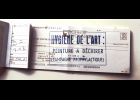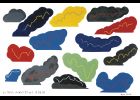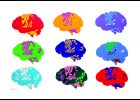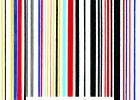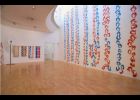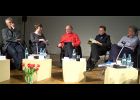Flusser’s Sonic Modernity
This chapter addresses Flusser’s often neglected writings on music and sound as they relate to his understanding of modernity. Taking two lectures ‘On Music’ and ‘On Modern Music’ given in Sao Paolo in 1965 as its departure point, Flusser’s conceptualization of a sonic modernity is examined within his ‘communicological’ theory. Contrary to a McLuhanesque media theory of the auditive, I argue Flusser’s theorization is distinct due to his characteristic ‘groundlessness’ and seeks to destabilize, rather than restabilize, a liberal Western humanist modernism.
Une conversation / Letters: Hervé Fischer - Vilém Flusser 1976 - 1982
This very personal bilingual interview with Hervé Fischer is preceded by a short e-mail exchange that sets the tone. It deals with Fischer’s personal relationship to Edith and Vilém Flusser, their first meeting, multilingualism, writing in French, the São Paolo Biennale, Flusser’s relationship to Alexandre Bonnier and Jeanne Gatard, Art Sociologique but also the future of Flusser’s legacy.
"Für eine Phänomenologie des Fernsehens" III: Nam June Paik und eine künstlerische Phänomenologie
When Vilém Flusser arrived at the conference held at the Museum of Modern Art in New York in January 1974 he did not know that an artist was responsible both for the conception and the title of the meeting. Flusser aspired to develop his media theory differently and in front of a completely different philosophical background as McLuhan. Nam June Paik, at that time in his zenith, most likely influenced Flusser philosophically as well as in terms of art examples and much more than Flusser was ready to admit in his short reference to one of Paik’s early non-electronic pre-video films. It is a bit strange that Flusser shied away from the confrontation with art in and with television. It is all the more important to determine the theoretical space that Nam June Paik must have opened to Flusser and others. Against this background it becomes clear that Flusser was able to approach the heritage of phenomenology in a more open und artistic, that is, in a more literary and essayistic way.
Communication Technologies as Grammars: Medium, Content and Message in Marshall McLuhan's work
This paper aims at exploring some classic concepts in the field of Communication Studies such as medium, content, and message, inspired by Marshall McLuhan’s thought. The paper will also recover a perspective which is still considered useful to the understanding of digital media: the idea that each technology of communication must be recognized as a kind of grammar capable of creating and shaping new modes of communication. Therefore, the dictum ‘the medium is the message’ will be analyzed by re-evaluating the different meanings that the ideas of medium and content assume throughout McLuhan’s work.
Human Consciousness and the Construct of Meaning in the Communication Theories of Marshall McLuhan and Vilém Flusser
Two of the most original and influential communication theorists of the past century, Canadian Marshall McLuhan and the German-Jewish-Czech born Brazilian Vilém Flusser, expounded the view that the dimensions and perceptions of consciousness are recurrently modified through the adoption of new forms of media intervention to acts of human communication. For these two theorists, then, communication acts play the decisive role in the formation of identity. In this respect they are both electronic age versions of classical rhetorical theorists who, far from simply writing primers on persuasion, brought to their task an entire social ontology of human consciousness. By contrasting their evaluations of the communication theory by criteria and opinions, coming across most pronouncedly is their common belief that the communication process is an adjunct to human experience; one which nonetheless has the ability to shape the self-constructing perceptions of our consciousness and construct meaning in the world.
A cidade como um medium em McLuhan e Flusser / The City as a Medium in McLuhan and Flusser
The interlacements between McLuhan and Flusser present the city in its fluidity as a complex topology enabled by communicative structures. For the network city and the device city and their transformations the location of the being is insignificant. An updated reading of Flusser’s text Die Stadt als Wellental in der Bilderflut encourages us to take into account the vocation for connectivity of this new form of urbanity.
McLuhan’s Pedagogical Art
This essay argues that Marshall McLuhan’s most important ideas on the media are to be found in the early writings of the 1940s and 1950s. McLuhan’s work did not provide policy makers with concrete recommendations, nor did he leave communication scholars with a theory of the media; but he developed new methodological ‘probes’ for thinking through the effects of a variety of media on environments and bodies in the newly mediated context of North America in the post-WWII period. His approach to media technology was aesthetic, interdisciplinary, transnational, phenomenological and driven by a commitment to pedagogy. His work was prophetic in terms of recognizing that electronic media would transform experiences of space and time, and the interrelation between global and local cultures.
